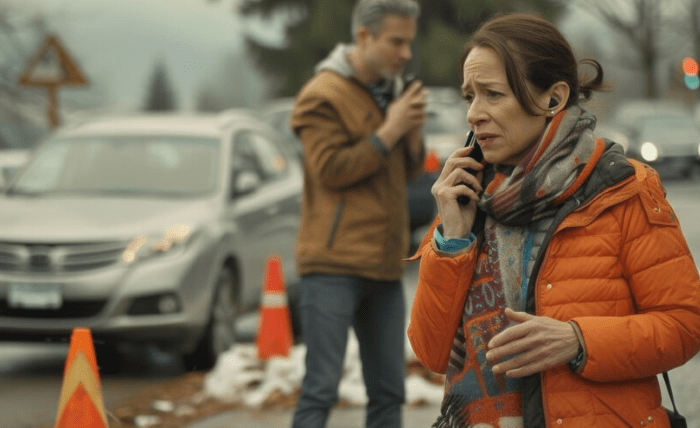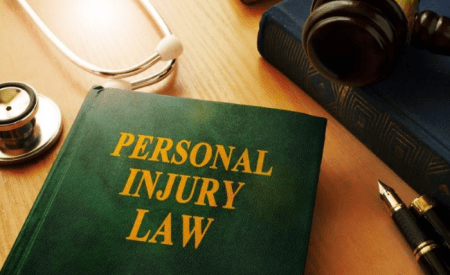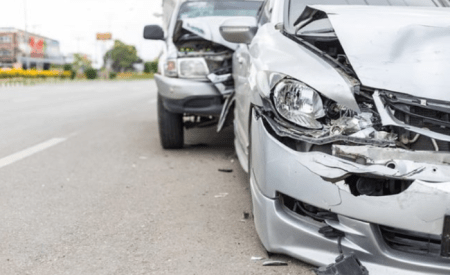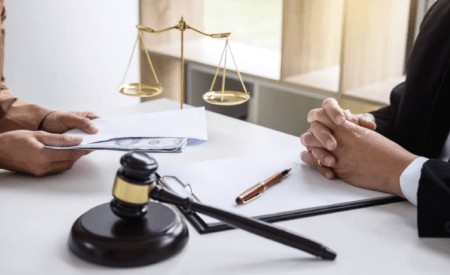Distance misjudgment is a common yet often underestimated factor in traffic accidents. Drivers who incorrectly estimate the distance between their vehicle and others can find themselves in dangerous situations, leading to collisions that could have been avoided. Whether it’s underestimating the space needed to safely merge or overestimating the time to stop behind another vehicle, misjudging distance is a serious hazard on the road. Understanding the reasons behind distance misjudgment and its impact on road safety is crucial for reducing accident rates.
Multiple factors contribute to why drivers misjudge distance, from poor visibility to overconfidence in driving abilities. Exploring the various ways distance misjudgment leads to accidents and providing tips on how to better assess and maintain safe distances can help drivers improve their awareness and prevent collisions in different driving scenarios.
The Impact of Speed on Distance Perception
One of the primary reasons drivers misjudge distance is the effect of speed on distance perception. At higher speeds, it becomes more challenging to accurately gauge the space between vehicles. The faster a car is moving, the greater the distance it covers in a shorter amount of time, making it easy to underestimate the space needed to slow down or stop safely. Drivers who are accustomed to slower speeds may find it difficult to adapt when driving on highways or in fast-moving traffic.
To combat this, drivers should increase their following distance as their speed rises. A general rule is to maintain at least three to four seconds of distance from the vehicle ahead, with even more space required in adverse weather conditions. This cushion provides additional time to react to sudden changes in traffic, reducing the likelihood of collisions caused by misjudged distances.
Tailgating and Rear-End Collisions
Tailgating, or following another vehicle too closely, is one of the most dangerous manifestations of distance misjudgment. Drivers who tailgate have little time to react if the vehicle in front suddenly stops or slows down, leading to rear-end collisions. These types of accidents are not only common but can also result in significant injuries and property damage. Consulting an attorney for rear-end accidents can help victims of such accidents understand their legal rights and options.
To prevent tailgating, drivers should always maintain a safe distance from the vehicle in front. Using landmarks or counting seconds can help determine if there is enough space to stop safely in an emergency. Practicing defensive driving and being mindful of the distance helps create a safer driving environment for everyone on the road.
Misjudging Distance While Merging
Merging onto a highway or into a different lane requires precise distance judgment. Drivers who miscalculate the space needed to merge safely often end up cutting off other vehicles or forcing them to brake suddenly, which can result in dangerous side-swipe or rear-end collisions. This is particularly problematic when entering high-speed traffic, where the margin for error is much smaller.
To merge safely, drivers should use acceleration lanes to match the speed of highway traffic and wait for a sufficiently large gap before changing lanes. Properly adjusting mirrors and checking blind spots are also critical steps. Taking the time to assess traffic flow and accurately judge the distance between vehicles reduces the risk of merging-related accidents.
The Role of Poor Visibility
Poor visibility, caused by weather conditions such as rain, fog, or snow, significantly affects a driver’s ability to judge distance. In these situations, objects may appear closer or farther away than they actually are, leading to risky driving decisions. Limited visibility also makes it more difficult to detect brake lights or hazards in time, increasing the potential for accidents.
Drivers should take extra precautions during adverse weather, including reducing speed and increasing following distances. Using headlights, even during the day, can improve visibility and help other drivers see your vehicle. Being aware of how weather conditions impact distance perception and adjusting driving behavior accordingly is essential for staying safe on the road.
Driving Fatigue and Distance Misjudgment
Fatigue significantly impairs a driver’s ability to judge distance accurately. Tired drivers often have slower reaction times and reduced attention spans, making it difficult to assess how far away other vehicles or objects are. This impairment increases the risk of accidents, especially on long road trips or during late-night driving when fatigue is more likely to set in.
Drivers should prioritize rest and avoid getting behind the wheel when feeling fatigued. Taking regular breaks on long journeys, staying hydrated, and switching drivers, if possible, are effective ways to combat fatigue. A well-rested driver is more alert and capable of making sound judgments about distance and road conditions.
Strategies for Improving Distance Judgment
Accurate distance judgment is a critical skill for safe driving, and there are various strategies that drivers can adopt to improve it. Here are some effective ways to enhance your ability to judge distances:
- Use Reference Points: Utilize road signs, lane markers, or stationary objects to help gauge the distance between your vehicle and others on the road.
- Practice Defensive Driving Habits: Maintain a safe following distance and actively scan the road ahead to anticipate changes in traffic flow and react appropriately.
- Take a Defensive Driving Course: Enrolling in a course can offer practical techniques and a deeper understanding of maintaining safe distances under different traffic conditions.
- Be Mindful of Speed and Visibility: Recognize that higher speeds, poor weather, and low visibility can alter your perception of distance, requiring greater caution and adjustments.
- Account for Fatigue: Understand that tiredness can impair your ability to judge distances, so ensure you are well-rested and alert when driving.
- Regularly Assess Your Skills: Continuously practicing and evaluating your distance judgment helps to refine this essential driving skill over time.
- Contribute to Road Safety: Improving your distance perception not only enhances your safety but also creates a more secure driving environment for everyone around you.
The Dangers of Overconfidence
Overconfidence in driving skills can lead to dangerous misjudgments about distance. Drivers who feel they have superior reflexes or control over their vehicle may be more likely to follow closely, speed, or attempt risky maneuvers without considering the consequences. This overestimation of ability can lead to accidents that could have been prevented with more cautious driving.
It’s important for drivers to stay humble and recognize that even experienced drivers are not immune to the effects of distance misjudgment. Regularly reminding oneself to follow traffic laws, maintain safe distances, and drive defensively helps minimize the risk of accidents. A healthy level of caution on the road goes a long way in promoting safety for all.







